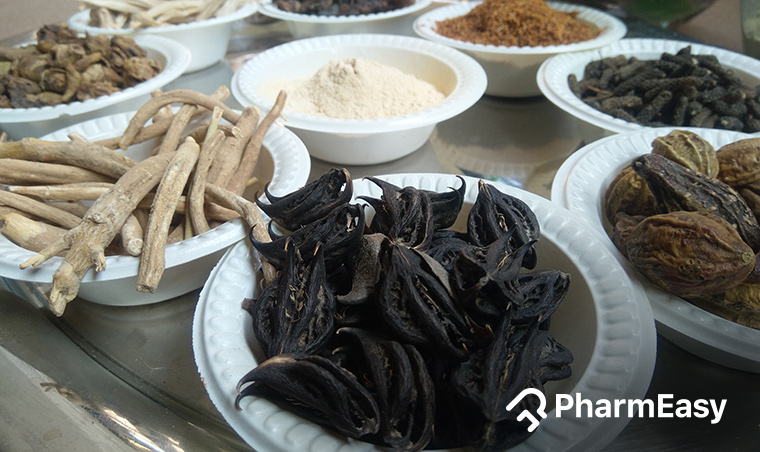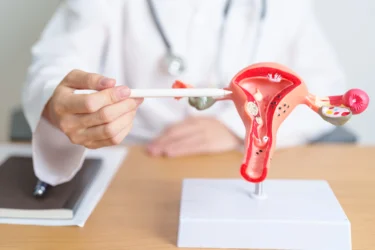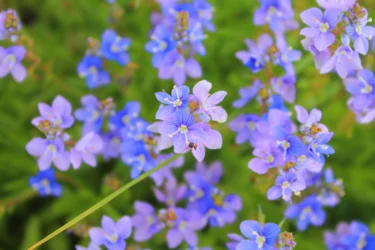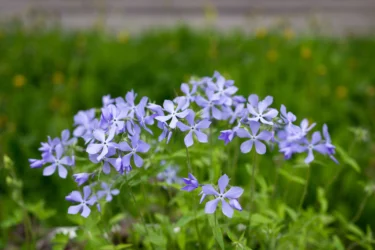Introduction
Chitrakadi vati is well recognised as an Ayurvedic preparation1. It is a polyherbal formulation containing nine ingredients of herbal origin: Chitraka (Plumbago zeylanica), maricha (Piper nigrum), pippali (Piper longum fruit), pippalimoola (Piper longum root), Chavya (Piper chaba), ginger (Zingiber officinale), hing (Ferula foetida/Ferula asafoetida), ajmoda (Apium leptophyllum), yava ksara (Hordeum vulgare) and panchalavana (Samudra, Sauvarchala, Saindhava, Vida, Audbhida)2.
Uses of Chitrakadi Vati
The uses of Chitrakadi Vati are as follows:
- It is commonly used to manage irritable bowel syndrome, abdominal tumours, rheumatoid arthritis, and appetite loss.
- It is also used as a digestive tonic and carminative. Chitrak stimulates digestion and appetite and aids in dealing with leprosy, fever, oedema, and scabies1,2.
- Long pepper is an anti-asthmatic, laxative, anti-infective agent in urinary tract infections, aphrodisiac, carminative, and analgesic1.
- Black pepper is used as a diuretic and analgesic and for managing constipation, piles, and colic1.
- Ginger is used to deal with heart problems and acts as a carminative1.
According to Ayurveda, Chitrakadi vati might be useful in decreasing mouth dryness caused due to increased levels of vatta and pitta levels and decreased kapha levels in the body. Chitrakadi vati might stimulate saliva secretion13.
Dr. Siddharth Gupta, MD, B.A.M.S, M.D (Ayu)
Benefits of Chitrakadi Vati
1. Benefits of Chitrakadi Vati Due to Laxative Activity
- The laxative efficacy of extract of Chitrakadi vati at various doses was studied1 in rats.
- The extract of Chitrakadi vati showed significant laxative action by increasing the stool output weight.
- The presence of long pepper and black pepper in Chitrakadi vati contribute to the laxative properties.
2. Benefits of Chitrakadi Vati for Ovulation
- According to a study3, Chitrakadi vati was one of the best medications for follicular rupturing tests.
- As a result, Chitrakadi vati was selected as a replacement for the human chorionic gonadotropin hormone for follicular rupture.
3. Benefits of Chitrakadi Vati for Liver
- Consumption of Chitrakadi gutika formulation (tablet of various herbs) and buttermilk was found to be effective in dealing with non-alcoholic fatty liver disease by reversing the fatty infiltration of the liver4.
- The liver-protective efficacy of extract of Chitraka roots was investigated in rats.
- The extract administration to rats dramatically reduced the serum marker levels, demonstrating that extract has a liver protective impact in restoring the hepatocytes’ normal function5.
4. Benefits of Chitrakadi Vati for Managing Inflammation
- The anti-inflammatory activities of Chitraka leaf extract were studied5 in experimental animal models.
- The extract exhibits anti-inflammatory activity by reducing the prostaglandin synthesis and release.
5. Benefits of Chitrakadi Vati for Managing Diabetes
- The antidiabetic effect of Chitraka roots extract was studied in rats.
- The root extract exhibited antidiabetic activity by increasing the hepatic hexokinase activity while decreasing serum acid phosphatase, hepatic glucose-6-phosphate, alkaline phosphatase and lactate dehydrogenase levels.
- The active constituent of the extract, plumbagin, significantly reduced the blood glucose levels in diabetic rats5.
6. Benefits of Chitrakadi Vati for Digestion
- Dietary maricha stimulates pancreatic enzymes that improve digestion and reduce food transit time in the gastrointestinal tract.
- It also increases saliva production and gastric secretions and activates the salivary amylase enzyme.
- Maricha or piperine present in Chitrakadi vati on oral administration stimulates the release of bile acids from the liver, which are important in the digestion and absorption of lipids6.
7. Benefits of Chitrakadi Vati for Managing Cholesterol
- Maricha inhibits cholesterol absorption while increasing cholesterol transporter protein translocation.
- It also improves digestion by assisting in the breakdown of bigger fat molecules into more easily digestible simple molecules and preventing fat storage in the body6.
8. Benefits of Chitrakadi Vati Due to Anti-diarrhoeal Activity
- The antidiarrhoeal effects of maricha extract were studied6 in rats at various doses.
- The extract was shown to have considerable anti-diarrhoeal, anti-motility, and anti-secretory activity due to the presence of alkaloids in maricha.
9. Benefits of Chitrakadi Vati in Managing Blood Clotting
- The effect of ginger extract on platelet thromboxane-B2 and prostaglandin-E2 synthesis was studied in rats.
- Oral administration of ginger at high doses is significantly effective in reducing serum prostaglandin-E2 and thromboxane-B2 levels.
- According to the findings, ginger can be employed as an anti-thrombotic and anti-inflammatory agent7.
10. Benefits of Chitrakadi Vati for Gastrointestinal Tract
- Traditional medicine has long employed the powdered rhizome of ginger to relieve the symptoms of gastrointestinal tract ailments.
- According to a study7 in mice, the extract of ginger and its components improved the gastrointestinal emptying of the charcoal meal.
- In humans, ginger has been shown to help prevent postoperative nausea and vomiting while not affecting stomach emptying.
11. Benefits of Chitrakadi Vati as an Antioxidant
- Several studies have revealed that ginger has potent antioxidant effects.
- The antioxidant effect of ginger has been proposed as one of the key probable reasons for the plant’s protective properties against radiation toxicity and lethality, as well as a variety of poisonous substances and potential as an anti-ulcer drug7.
- The extracts of the Asafoetida plant showed antioxidant activity in experimental animals.
- Results of the study showed a reduction of lipid peroxidation levels in the liver of rats8.
12. Benefits of Chitrakadi Vati for Managing Obesity
- The effects of F. asafoetida on weight gain and fat build-up in diabetic patients were researched.
- It was shown to reduce body weight, abnormal fat, and adipocyte cell size.
- As a result, it will be regarded a viable therapy option for diabetes-induced obesity8.
13. Benefits of Chitrakadi Vati Due to Immunomodulatory Activity
The extracts of chavya considerably boost lymphocyte proliferation, implying an immunomodulatory action, mainly through lymphocyte proliferation and natural killer cell activity activation9.
In Ayurveda, Chitrakadi vati might help in reducing oedema in the legs and hands (extremities) caused due to ama dosha13.
Dr. Rajeev Singh, BAMS
How to Use Chitrakadi Vati?
Chitrakadi vati can be used as:
- Chitrakadi vati extract1
- Chitrakadi dutika (pills)10
Also Read: Custard Apple: Uses, Benefits, Side Effects and More!
Side Effects of Chitrakadi Vati
Some side effects are observed due to the following constituents of Chitrakadi vati:
- Chitraka: Excessive use of the chitraka plant has toxic effects. Irritation burning of the tongue, throat, stomach and other body regions can be seen. It can also cause nausea, vomiting, dysuria, diarrhoea, burning sensation while urinating, a weak pulse, wrinkled skin, and cold skin11.
- Ginger: It may cause heartburn, mild diarrhoea, gastric irritation and allergy7.
- Hing: Its extracts have been investigated and proven safe for everyday usage. Large doses of asafoetida can cause mouth swelling, digestive problems such as flatulence and diarrhoea, nervousness, and headaches8.
Generally, according to Ayurveda, ama and vatta doshas can create joint pain. In such cases, Chitrakadi vati might be useful in reducing joint pain13.
Dr. Smita Barode, BAMS
Also Read: Green Chilli: Uses, Benefits, Side Effects and More!
Precautions to Take with Chitrakadi Vati
You should keep the following points in mind:
- In pregnancy, the utilisation of chitraka plants can irritate pelvic organs and ultimately cause abortion11.
- The gum of closely related species of Hing may irritate the skin and stomach, resulting in dermatosis12.
- Because it affects the menstrual cycle and is an abortifacient, Hing should not be used during pregnancy or lactation8,12.
- Foetal haemoglobin is oxidised with asafoetida use, whereas adult haemoglobin is not. Children should not be given this medication since it may cause methaemoglobinemia12.
Also Read: Abhayarishta: Uses, Benefits & How to Use It
Frequently Asked Questions (FAQs)
What is chitrakadi vati? Chitrakadi vati is an Ayurvedic preparation of Chitraka (Plumbago zeylanica), maricha (Piper nigrum), pippali (Piper longum fruit), pippalimoola (Piper longum root), Chavya (Piper chaba), ginger (Zingiber officinale), hing (Ferula foetida), ajmoda (Apium leptophyllum), yava ksara (Hordeum vulgare) and panchalavana (Samudra, Sauvarchala, Saindhava, Vida, Audbhida)1,2.
What is the use of chitrakadi vati? It is commonly used to manage irritable bowel syndrome, rheumatoid arthritis, and appetite loss. It is also used as a digestive tonic and carminative. Chitrak stimulates digestion and appetite and aids to deal with leprosy, fever, oedema, and scabies1,2.
How to use chitrakadi vati? It is used in the form of Chitrakadi vati extract and Chitrakadi dutika (pills)1,10.
Is chitrakadi vati good for liver? Yes, it is good for the liver. The consumption of Chitrakadi gutika and buttermilk was found to be effective in managing the non-alcoholic fatty liver disease by returning the fatty infiltration of the liver to a normal level4.
References
- Kumar A, Deepa L, Lakshman K, Satish KV, Chandra Shekar KB, Narayan Swamy VB, et al. Evaluation of laxative activity of Chitrakadi vati, an ayurvedic formulation in rats. Pharmacologyonline [Internet]. 2007 [cited 2022 Feb 28];1:420-3. Available from: https://pharmacologyonline.silae.it/files/archives/2007/vol1/44_Kumar.pdf
- Khanvilkar V, Patil L, Kadam V. Standardization of Chitrakadi Vati: An Ayurvedic Polyherbal Formulation. Int J Pharm Sci Drug Res [Internet]. 2014 [cited 2022 Feb 28];6(4):303-9. Available from: https://www.ijpsdr.com/index.php/ijpsdr/article/view/359/323
- Shukla K, Karunagoda K, Sata N, Pandya MA. Evaluation of the role of Chitrakadi Vati in the management of Bandhyatva w.s.r to anovulation (as a consequence of unruptured follicle). AYU [Internet]. 2009 [cited 2022 Feb 28];30(4):392-6. Available from: https://www.ayujournal.org/temp/Ayu304392-5572047_152840.pdf
- Chandran A, Mahadevan L, Nisha MG. Clinical Efficacy of Chitrakadi Gutika in Non Alcoholic Fatty Liver Disease-A Case Study. Int J AYUSH Case Reports [Internet]. 2021 [cited 2022 Feb28];5(4):237-41. Available from: https://www.ijacare.in/index.php/ijacare/article/view/250/203
- Shukla B, Saxena S, Usmani S, Kushwaha P. Phytochemistry and pharmacological studies of Plumbago zeylanica L.: a medicinal plant review. Clin Phytosci [Internet]. 2021 [cited 2022 Feb28];7(1):34. Available from: https://clinphytoscience.springeropen.com/track/pdf/10.1186/s40816-021-00271-7.pdd
- Saleem A, Naureen I, Naeem M, Tasleem G, Ahmed H, Farooq U. Therapeutic Role of Piper Nigrum L (Black Pepper) and Pharmacological Activities. Sch Int J Biochem [Internet]. 2022 [cited 2022 Feb 28];5(1):15-21. Available from: https://saudijournals.com/media/articles/SIJB_51_15-21.pdd
- Ali BH, Blunden G, Tanira MO, Nemmar A. Some phytochemical, pharmacological and toxicological properties of ginger (Zingiber officinale Roscoe): a review of recent research. Food Chem Toxicol [Internet]. 2008 [cited 2022 Feb 28];46(2):409-20. Available from: https://sci-hub.st/10.1016/j.fct.2007.09.085
- Amalraj A, Gopi S. Biological activities and medicinal properties of Asafoetida: A review. J Trad Complementary Med [Internet]. 2017 [cited 2022 Feb 28];7(3):347-59. Available from: https://www.ncbi.nlm.nih.gov/pmc/articles/PMC5506628/
- ) Islam MT, Hasan J, Snigdha HS, Ali ES, Sharifi-Rad J, Martorell M, et al. Chemical profile, traditional uses, and biological activities of Piper chaba Hunter: A review. J Ethnopharmacol [Internet]. 2020 [cited 2022 Feb 28];257:112853. Available from: https://pubmed.ncbi.nlm.nih.gov/32283191/
- Chetty KM. Pharmaceutical studies and therapeutic uses of Plumbago zeylanica L. roots (Chitraka, Chitramulamu). Ethnobotanical Leaflets [Internet]. 2006 [cited 2022 Feb28];10:294-304. Available from: https://www.researchgate.net/publication/215649528_Pharmaceutical_Studies_and_Therapeutic_Uses_of_Plumbago_Zeylanica_L_Roots_Chitraka_Chitramulamu
- ) Choudhary S, Kaurav H, Chaudhary G. Citraka (Plumbago zeylanica): A Potential Rejuvenator.Int J Res Appl Sci Biotechnol [Internet]. 2021 [cited 2022 Feb 28];8(2):202-12. Available from: https://www.researchgate.net/publication/350798692_Citraka_Plumbago_zeylanica_A_Potential_Rejuvenator
- Duke JA. Handbook of medicinal herbs. CRC press; 2002 Jun 27 [cited 2022 Feb 28]; Page No: Available from: https://www.enpab.it/images/2018/James_A.Duke-_Handbook_of_Medicinal_Herbs.pd
- Parihar BK, Kadibagil VR, Ganti BY. Role of Chitrakadi Vati in Grahani Roga. Int Ayurvedic Medical J. 2016;4(2):121–124. Available from: https://www.researchgate.net/publication/348704184_ROLE_OF_CHITRAKADI_VATI_IN_GRAHANI_ROGA
Disclaimer: The information provided here is for educational/awareness purposes only and is not intended to be a substitute for medical treatment by a healthcare professional and should not be relied upon to diagnose or treat any medical condition. The reader should consult a registered medical practitioner to determine the appropriateness of the information and before consuming any medication. PharmEasy does not provide any guarantee or warranty (express or implied) regarding the accuracy, adequacy, completeness, legality, reliability or usefulness of the information; and disclaims any liability arising thereof.
Links and product recommendations in the information provided here are advertisements of third-party products available on the website. PharmEasy does not make any representation on the accuracy or suitability of such products/services. Advertisements do not influence the editorial decisions or content. The information in this blog is subject to change without notice. The authors and administrators reserve the right to modify, add, or remove content without notification. It is your responsibility to review this disclaimer regularly for any changes.
 14
14
 0
0 





































Comments